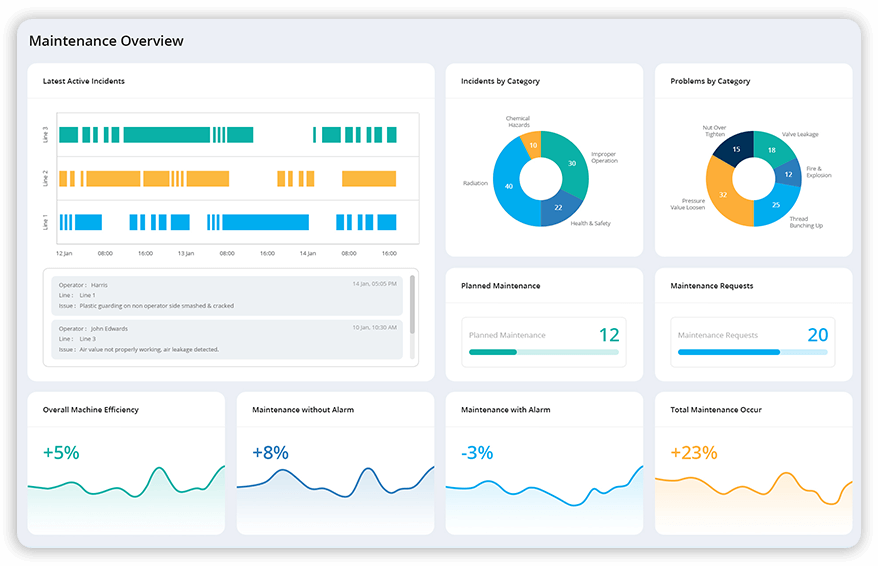
Move from Complicated to Automated Maintenance Management
One of the biggest challenges that the Maritime Industry faces is vessel maintenance management, and the good part is that Marine Vessel/Fleet maintenance is easier now with TITAN CMMS! An out-of-service marine vessel increases operating costs, damages customer relations, creates unsafe operating environments and decreases profits. CMMS helps organisations plan maintenance activities keeps track of the work order from its start to completion. Using CMMS, teams can schedule periodic surveys or maintenance checks to analyse the marine vessels and ensure they work efficiently. Auto-generated custom reports provide maintenance history and related details helping teams make data-driven decisions. Identifying vessels requiring frequent maintenance, running root-cause analysis, and initiating action plans to remove anomalies has become easier with TITAN CMMS.
Reduce 20% - 30% of Your Vessel Maintenance Expenses
A well-planned maintenance program is integral to marine vessels/fleet management as it reduces 20-30% of vessel maintenance expenses. TITAN CMMS gives a user-friendly interface to manage maintenance-related activities and maintains vessels' condition using comprehensive Planned, Preventive and Predictive Maintenance, Just Do It (JDIs), and Onetime Maintenance (OMs).
- Optimise vessel maintenance management
- Standardised maintenance processes with checklists
- Scheduled maintenance for multiple vessels and assets in different locations
- Auto-generate PM tasks based on time, fuel usage & hours run
- Optimised asset and spare part inventory management

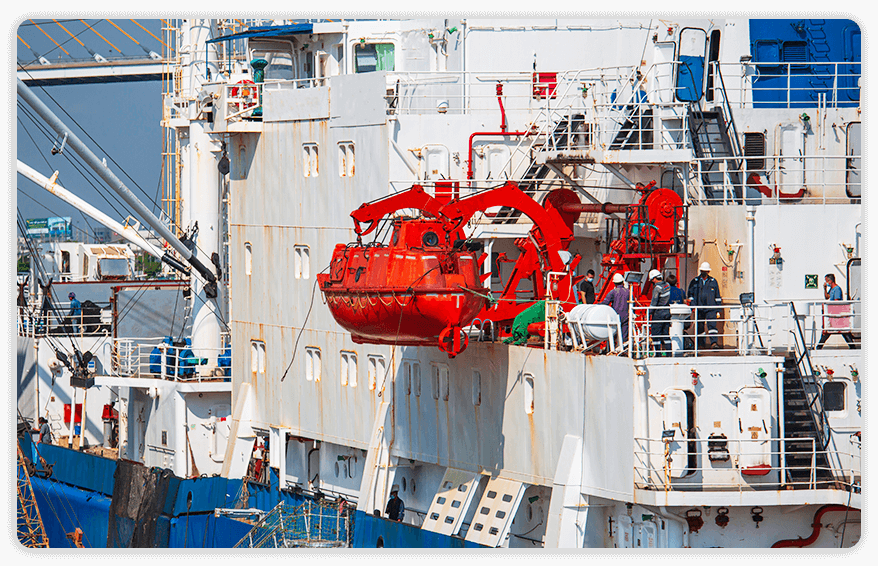
Marine Maintenance Management Optimisation
Have a hard time finding cost-efficient maintenance plans that suit your fleets? Do the regular changing of the vessels or crews or the lack of uniformity in the Planned Maintenance System strategies affecting the productivity of the operations? Our Marine CMMS can help you guarantee the efficient maintenance of your vessels, lower the risk of off-hire and optimise your maintenance costs. Gaining complete control of your fleet maintenance can help you implement the maintenance strategy throughout the organisation, establish your KPIs and measure them.
- Autonomous maintenance
- Planned and unplanned maintenance
- Focused improvements
- Daily Checks
- Tracking of the maintenance tasks status
- Assign maintenance tasks to the concerned crew member
- Complete Maintenance history log
- Access to updated information with the daily activity logs, defect action plans and audit checklists.
- Comprehensive dashboard view of all the maintenance activities
- Monitoring of the vessel performance
- Record of the inventory and machine parts
- Automated Service reminders
Marine Planned Maintenance System
According to the International Safety Management Code(ISM), every ship needs to have a Planned Maintenance System. An effective PMS not only meets safety or environmental standards but also forms an investment in asset management and maintenance. PMS ensures safe and reliable vessel operations through a systematic approach of risk assessment and establishing a complete database of machinery, equipment and fittings.
- Identify and schedule maintenance tasks
- Automatic scheduling and assigning of the planned tasks at the set intervals
- Identifying and tracking the critical and non-critical equipment and their corresponding maintenance tasks
- Automated service reminders at defined intervals
- Preventing breakdown maintenance through defect reporting
- Centralised data management- Data can be accessed, maintained and monitored for the onshore vessels from the offshore offices
- Conducting risk assessment before undertaking hazardous jobs
- Record of the asset lifecycle
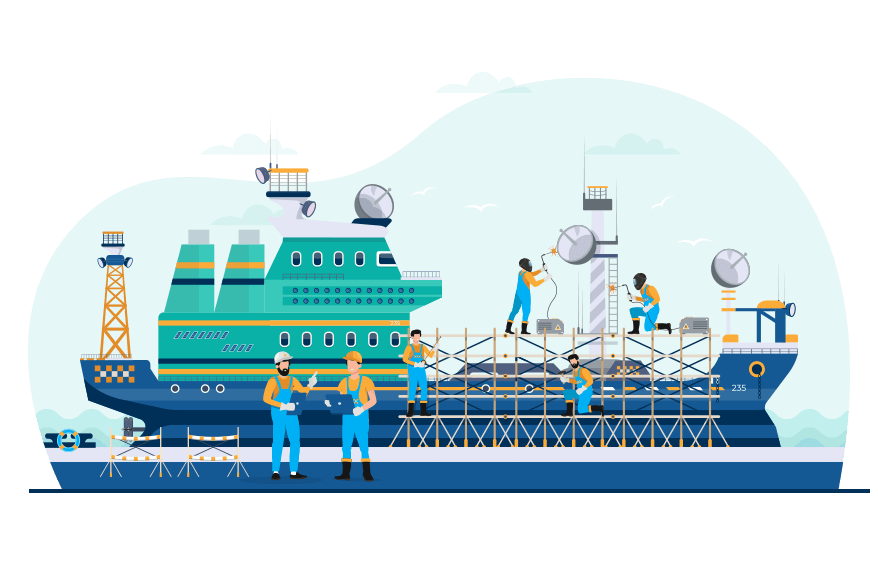
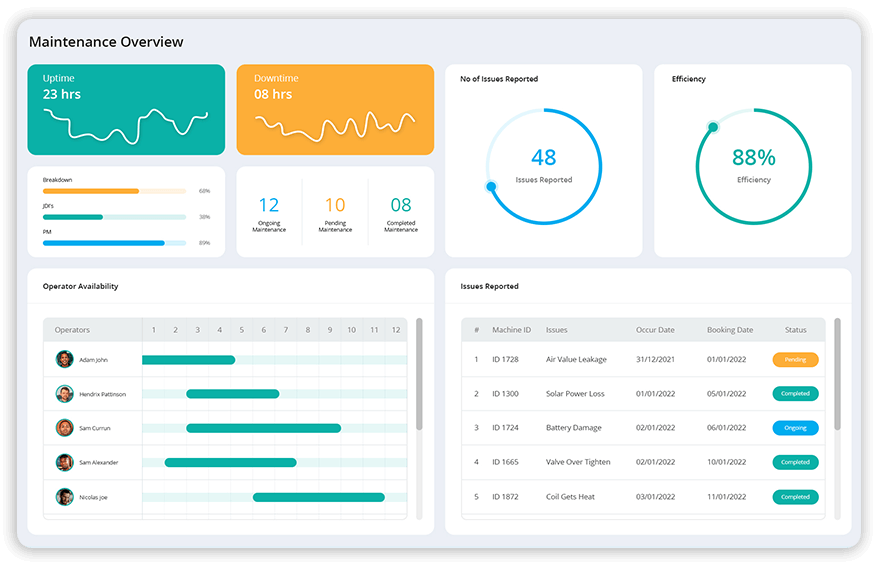
Centralised Data Management
Having a centralised data management system simplifies the control of the equipment across the entire fleet. A single click can get you all the data regarding the asset details, their statuses, storage, work history, scheduled jobs, spare parts, specifications, documents and reports.
- Prevent the reoccurrence of defects
- Uniform data across the fleet
- Ensuring the uniform implementation across the fleet
- Complete overview of the fleet assets
- Transfer asset details between the vessels
- Track the movement of the components and the stock details
- Optimise maintenance and reduce downtime
Defect Reporting
Imagine having to stop your operations halfway due to unplanned breakdowns. How unfortunate it would be! The Defect reporting feature in CMMS can help you solve this. As soon as the defect is detected during the auditing process, a defect tag is raised, and an action plan is created against it. A complete record of details of the defect raised to the workflow, resource allocation, and spare parts to the resolving of the issues will be accessible to the associated maintenance team.
- Identify and report the defects
- Complete history of the defect reporting
- Save time and easy follow-up
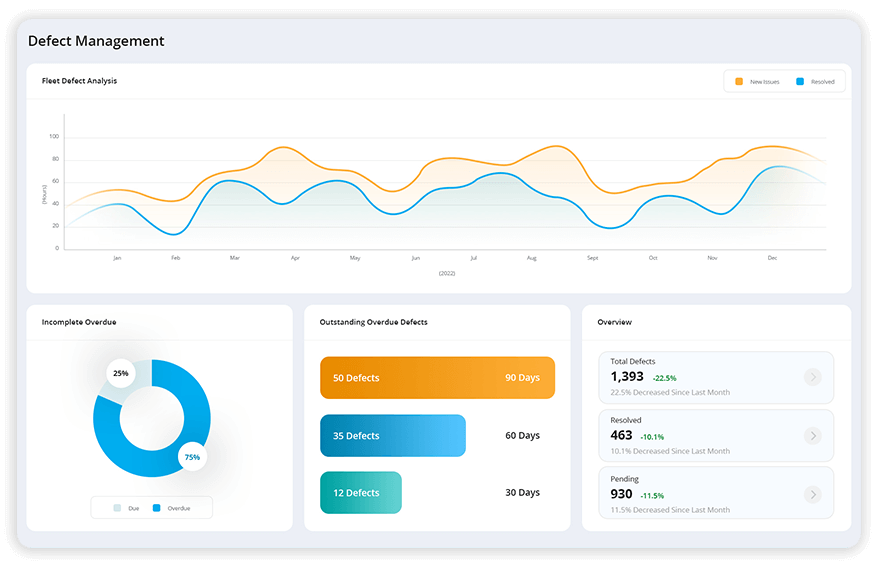
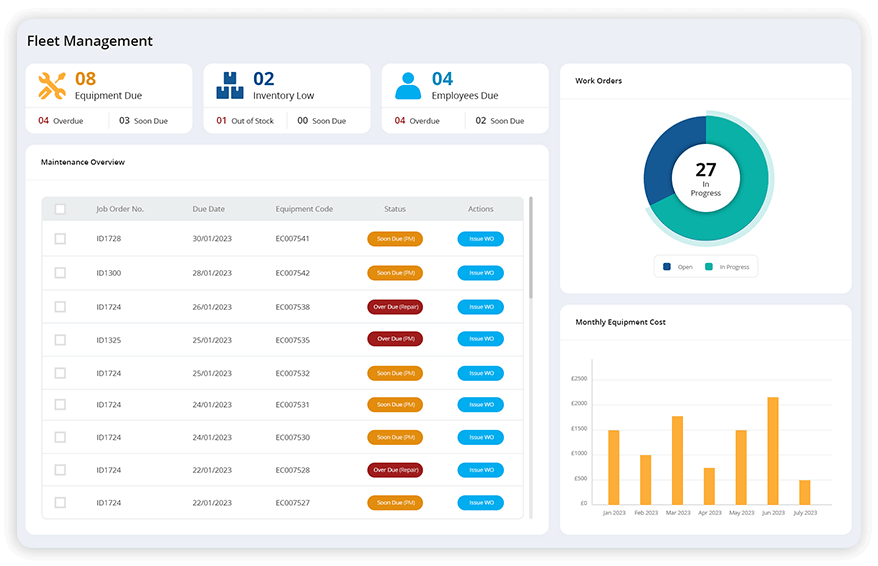
Fleet Management
Access each vessel database as well as the database of all the vessels in a single place. Supervising all the transactions makes it easy to monitor and communicate the different KPIs across the fleet.
- Access each individual vessel database instantaneously
- Assess data across all vessels
- Easy overview with Fleet Supervision
TITAN CMMS - The Key to Optimise Maintenance Operations
Smart Solution
Worried about managing maintenance operations? TITAN CMMS is here to help! TITAN help organisations track and manage all maintenance-related tasks, boosts asset efficiency and performance, by creating a maintenance request, breakdown request, just do it (JDI), and tasks, at any time from anywhere.
Start Free Trial Watch Video Tell a FriendDry Dock Maintenance
Managing your dry dock maintenance projects cost-effectively with CMMS software will let you connect all the provisions in the vessels, vendor and office and plan the tasks accordingly. You can also effortlessly transfer existing maintenance jobs to docking projects from the regular maintenance schedule.
- Complete history of the registered hours, spare parts and the costs
- Standardised descriptions for each task
- Change normal jobs into dock jobs and vice versa
- Integrate with requisitions, job management, and procurement
- Unplanned off-hire can be avoided
- Effective planning and reporting

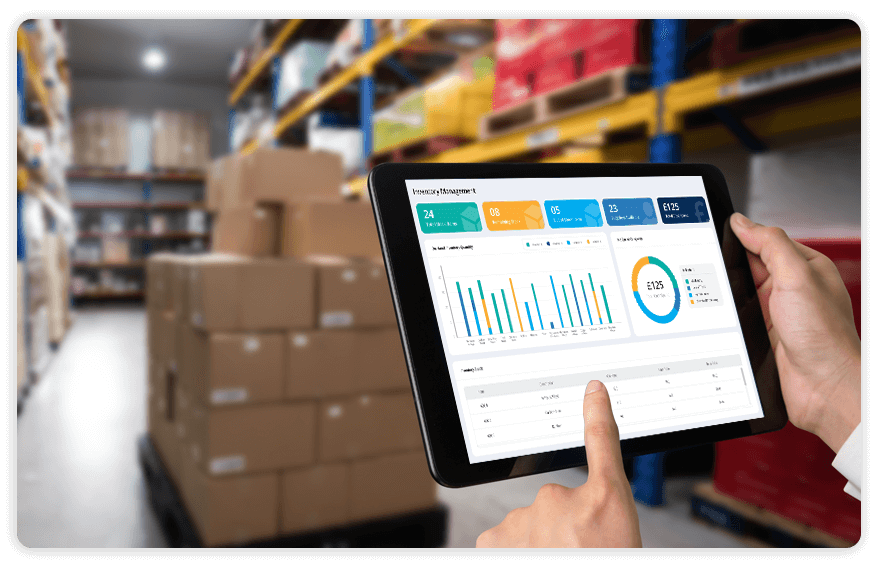
Inventory Management
Maintaining an efficient inventory management system gives a better idea of the connection between the spare parts and the components. Effectively understanding spare parts' condition and status can help boost maintenance operations.
- Stock and spare part control
- Overview of stock history
- Control of requisition, order processing, and delivery
- Optimised internal processes
- Easy and fast identification of spare parts
Task Management
A single place to manage all your maintenance tasks. With the Marine CMMS software, you can manage and allocate the tasks to the respective vessels and keep a complete overview of them.
- Task lists can be used to monitor key performance indicators.
- Overview of tasks per vessel or fleet
- Optimise vessel maintenance management
- Share knowledge on fleet level
- Improved task performance
- Prevent the reoccurrence of defects
- Maximise uptime
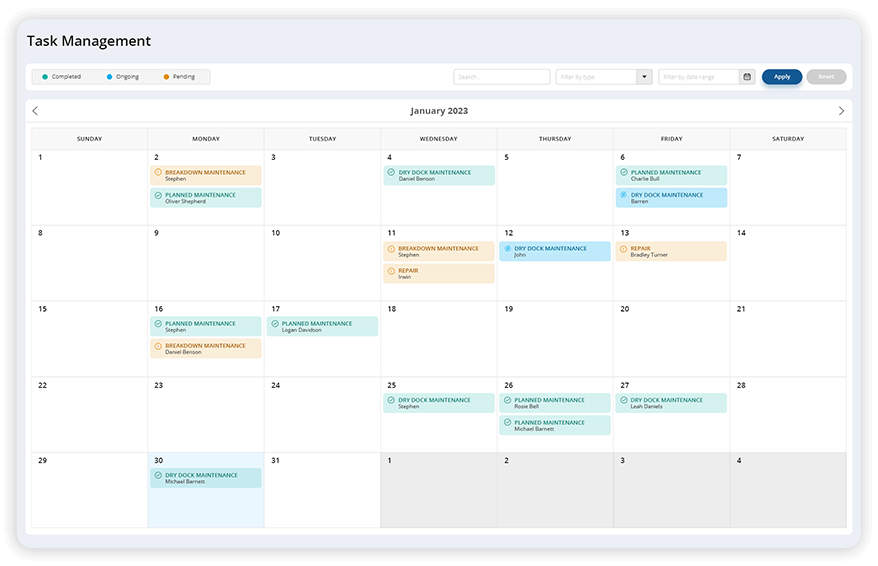
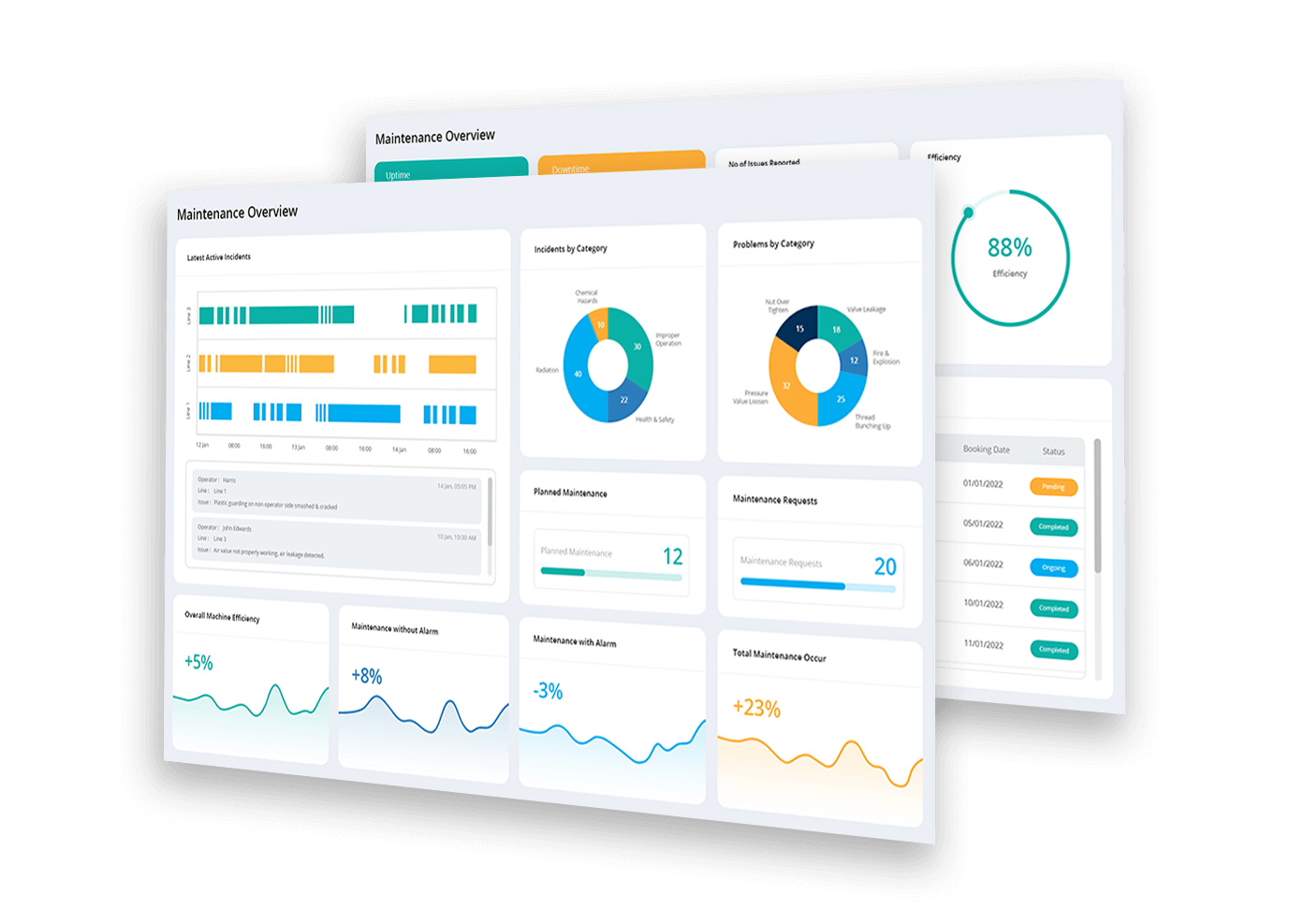
Dynamic Dashboards
Be it onshore or offshore, get actionable insights into the maintenance operations of the fleets with custom dashboards. Whether it is overdue critical or class-related maintenance jobs for a selection of vessels, the number of requests for quotes awaiting a reply from the suppliers, spare part usage for the same type of maintenance job across the fleet, the number of incident reports for the fleet group, you can view it in the dashboards.
- KPI overview
- Data drill-down functionality
- Multiple dashboards with multiple data areas
- Reduced response time and error rates
- Dashboards for management decisions and operational needs
What is CMMS?
Have you been struggling with centralising and managing maintenance-related information? The solution is right here, CMMS software eases the process of maintenance operations by streamlining maintenance information. Computerised Maintenance Management System (CMMS) software, also known as Computerised Maintenance Management Information System (CMMIS), help organisations plan, schedule, and track all maintenance activities by effectively managing work orders, assets and inventory. The maintenance management system collects information from relevant KPIs and evaluates maintenance tasks’ performance and effectiveness.
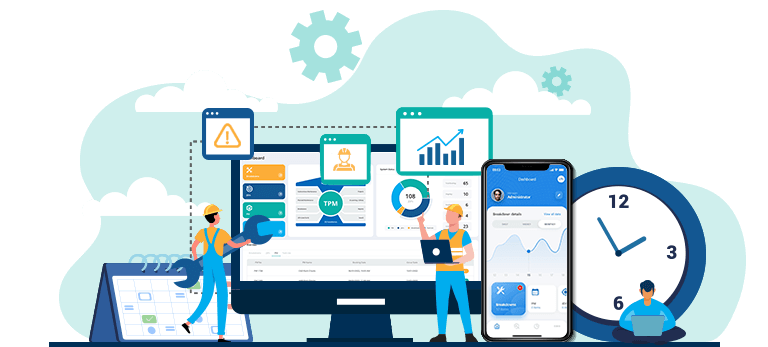
Contents
- What is Marine Maintenance Management?
- What is a Ship Maintenance System?
- What is the primary benefit of Predictive Maintenance for Marine Vessels?
- What is the main aim of any maintenance plan on the ship?
- Why invest in a Maritime CMMS?
- What are the benefits of using a Marine Maintenance System?
- What role does Ship Maintenance play in the Maritime Business?
What is Marine Maintenance Management?
Marine maintenance management is a comprehensive maintenance system that ensures the smooth working condition of marine vessels. Ranging from fixing significant issues to performing day-to-day tasks, it is the most essential part of vessel operations. Without interfering with routine operations, it makes sure the ship is always maintained in the correct operating state.
What is a Ship Maintenance System?
The International Safety Management Code has set maritime standards for the safe management and operations of ships at sea. According to these ISM standards, the ships need to have a maintenance management system which guarantees safe and reliable vessel operations, including the equipment. The shipowners and operators plan and perform the vessel maintenance at intervals and keep the machinery up to date and in smooth working condition.
What is the primary benefit of Predictive Maintenance for Marine Vessels?
Conducting the breakdown maintenance while the vessel is operational is complicated and challenging. Predictive Maintenance for marine vessels schedules the corrective maintenance before the vessels are operational. Predictive maintenance will help to upkeep the condition of the equipment and ensure compliance with the safety regulations in the maritime industry.
What is the main aim of any maintenance plan on the ship?
The primary purpose of the maintenance plan on the ship is to complete maintenance and repair work cost-effectively in less time. As a result, every shipping firm adheres to a maintenance schedule to guarantee that the ship's machinery maintains a particular standard of operation and safety.
Why invest in a Maritime CMMS?
- Streamline internal processes
- Secure data transfer between vessels and offices
- Facilitates effective maintenance management
- Enhance your daily operations
- Eliminate manual processes and disorganised collection of spreadsheets, documents or emails.
- Controlling and evaluating the performance of the maintenance department
What are the benefits of using a Marine Maintenance System?
- Structured maintenance data
- Streamlined internal processes
- Reduced downtime with fleet preventive maintenance.
- Increased asset lifecycle across the fleet
- Maintaining knowledge of equipment and machinery
- Complete inventory management
- Improved working environment
- Task management
- Secure data exchange between vessels, onshore and when in dry dock.
- Optimisation of the Ship’s Utility
- Daily Task Planning Becomes Easier
- Improved Safety
- Enhanced Communication
What role does Ship Maintenance play in the Maritime Business?
To function properly, a ship must have periodic inspections and scheduled maintenance. The scheduled maintenance is carried out per the ship's book, which specifies how frequently specific items require review and maintenance, including routine inspections, lube oil change intervals, and major overhauls.
CMMS to Manage Your Maintenance
Frequently Asked Questions
- Optimise vessel maintenance management
- Standardised maintenance processes with checklists
- Scheduled maintenance for multiple vessels and assets in different locations
- Auto-generate PM tasks based on time, fuel usage & hours run
- Optimised asset and spare part inventory management















